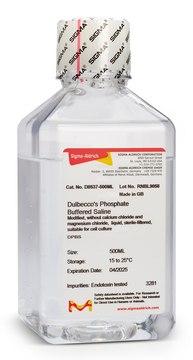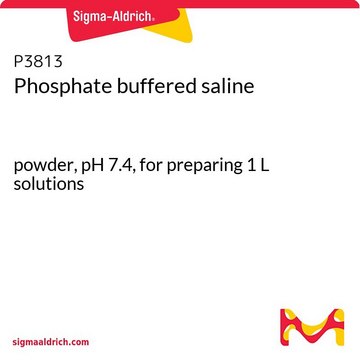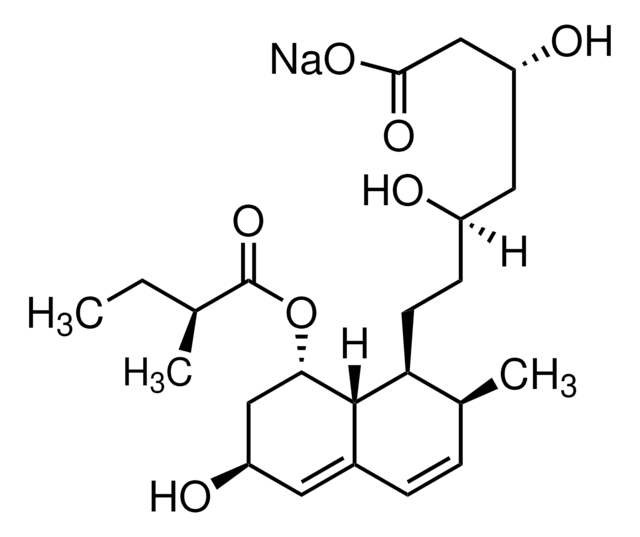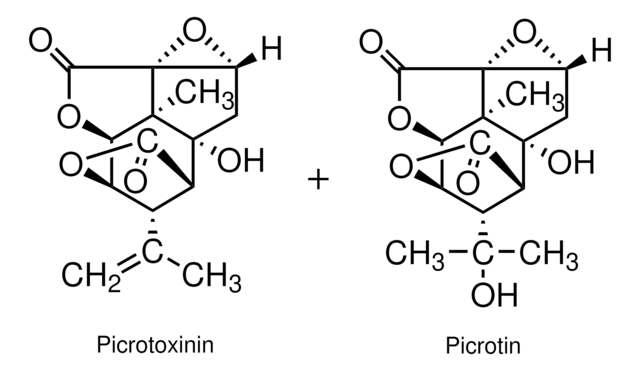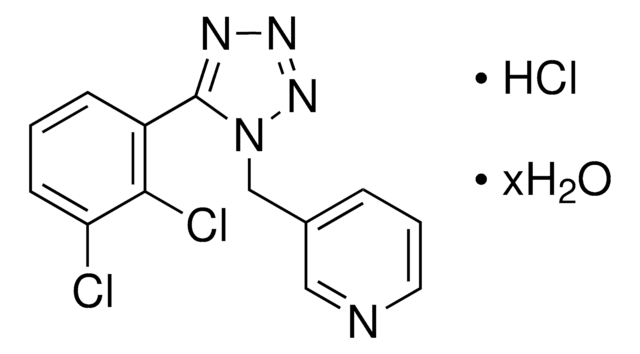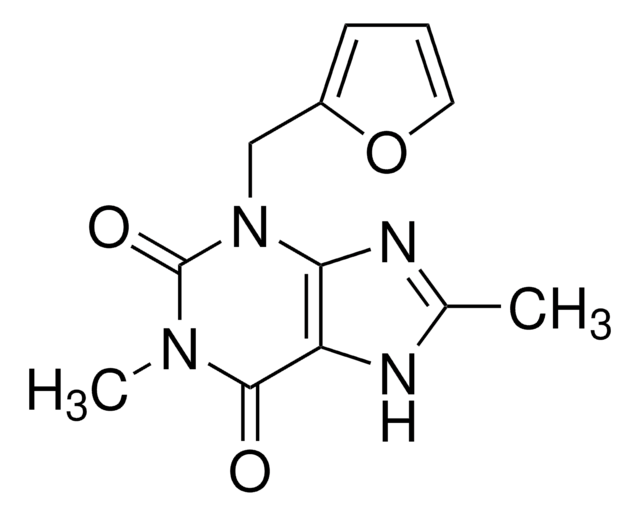C7374
CK-636
≥98% (HPLC)
Synonym(s):
CK-0944636; N-[2-(2-Methyl-1H-indol-3-yl)ethyl]-2-thiophenecarboxamide
Sign Into View Organizational & Contract Pricing
All Photos(1)
About This Item
Empirical Formula (Hill Notation):
C16H16N2OS
CAS Number:
Molecular Weight:
284.38
MDL number:
UNSPSC Code:
12352200
NACRES:
NA.77
Recommended Products
Quality Level
Assay
≥98% (HPLC)
form
powder
color
peach to light pink
solubility
DMSO: ≥20 mg/mL
storage temp.
2-8°C
SMILES string
Cc1[nH]c2ccccc2c1CCNC(=O)c3cccs3
InChI
1S/C16H16N2OS/c1-11-12(13-5-2-3-6-14(13)18-11)8-9-17-16(19)15-7-4-10-20-15/h2-7,10,18H,8-9H2,1H3,(H,17,19)
InChI key
ACAKNPKRLPMONU-UHFFFAOYSA-N
Biochem/physiol Actions
CK-636 binds between Arp2 and Arp3, where it appears to block movement of Arp2 and Arp3 into their active conformation. CK-636 inserts into the hydrophobic core of Arp3 and alters its conformation. Both classes of compounds inhibit formation of actin filament comet tails by Listeria and podosomes by monocytes.
CK-636 inhibits the activity of actin-related protein (Arp)2/3 complex; binds between Arp2 and Arp3, blocks movement of Arp2 and Arp3 into active conformations, inhibits ability to nucleate actin filaments.
Choose from one of the most recent versions:
Certificates of Analysis (COA)
Lot/Batch Number
Don't see the Right Version?
If you require a particular version, you can look up a specific certificate by the Lot or Batch number.
Already Own This Product?
Find documentation for the products that you have recently purchased in the Document Library.
Charlotte Ford et al.
PLoS pathogens, 14(5), e1007051-e1007051 (2018-05-05)
Pathogens hijack host endocytic pathways to force their own entry into eukaryotic target cells. Many bacteria either exploit receptor-mediated zippering or inject virulence proteins directly to trigger membrane reorganisation and cytoskeletal rearrangements. By contrast, extracellular C. trachomatis elementary bodies (EBs)
Liang Ma et al.
Cell research, 25(1), 24-38 (2014-10-25)
Cells communicate with each other through secreting and releasing proteins and vesicles. Many cells can migrate. In this study, we report the discovery of migracytosis, a cell migration-dependent mechanism for releasing cellular contents, and migrasomes, the vesicular structures that mediate
Our team of scientists has experience in all areas of research including Life Science, Material Science, Chemical Synthesis, Chromatography, Analytical and many others.
Contact Technical Service